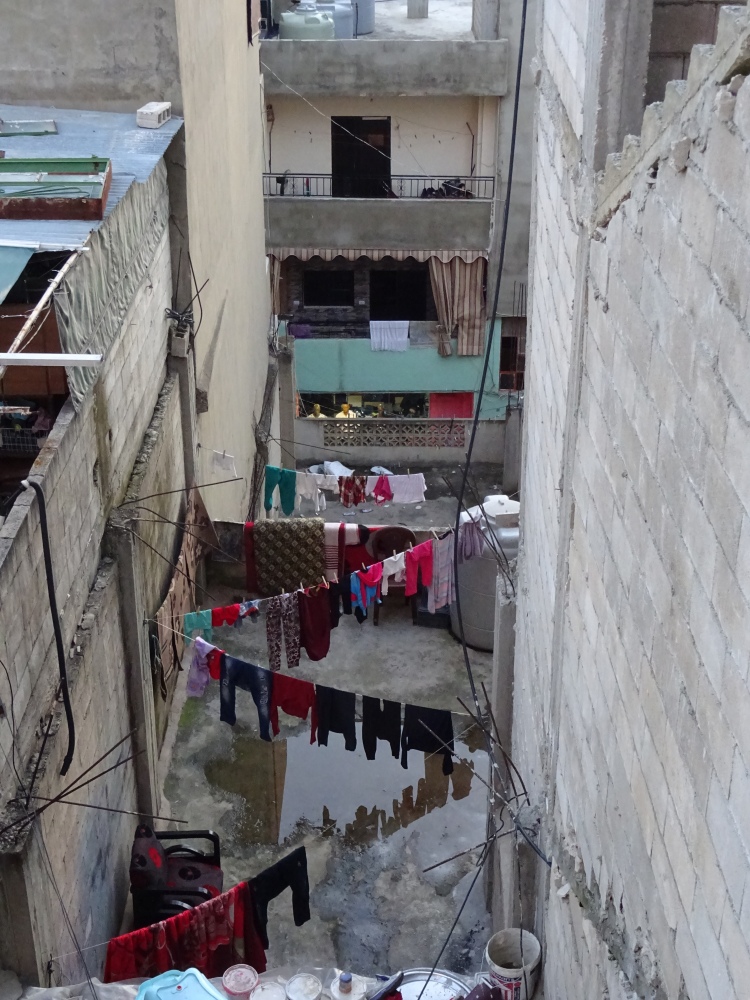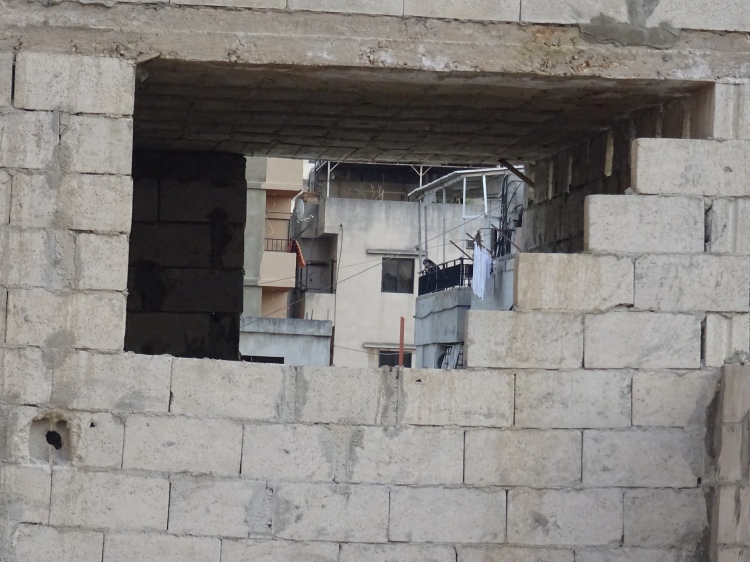Palestinian and Syrian Refugees in Lebanon: Sharing Space, Electricity and the Sky
by Elena Fiddian-Qasmiyeh, University College London
It is often assumed that refugees are vulnerable and passive people who are dependent upon the assistance provided by states, NGOs and citizens. In contrast, my on-going research is examining how established Palestinian refugees and their refugee camp homes are adapting and responding to the arrival of thousands of refugees from Syria. Amongst other things, this demonstrates the agency of refugees as both recipients and providers of support in complex displacement contexts.
Baddawi refugee camp in North Lebanon was established in 1955, and has been home to between 25,000 and 40,000 ‘established’ Palestinian refugees since then. In 2007, over 15,000 ‘new’ Palestinian refugees were displaced from nearby Nahr el-Bared refugee camp to Baddawi camp when Nahr el-Bared was destroyed during fighting in 2007. With an estimated 10,000 refugees from Nahr el-Bared still residing in Baddawi, these ‘internally-displaced-refugees-hosted-by-refugees’ have in turn become part of the established refugee community in Baddawi. This ever-increasing refugee community, and the increasingly cramped space they inhabit, has been welcoming refugees fleeing the Syria conflict – Syrians, Palestinians, Iraqis and Kurds – since 2012, and indeed before.
This photo-essay is based on my most two recent fieldtrips to Baddawi camp and its environs in July-August 2015 and in April 2016, documenting different elements of everyday life in the camp, and some of the changes that took place in the 8 months between these research visits.


Over 43,000 Palestinian refugees formerly based in Syria are currently in Lebanon, with a large proportion of these ‘new’ arrivals having sought safety in the established urban Palestinian refugee camps in that country. As increasing numbers of refugees from Syria have arrived, Baddawi camp has continued to grow vertically, with new floors being added seemingly constantly to the unstable foundations of existing buildings, for new neighbours to find shelter, and for the small camp economy to stay afloat.

“The distance that separates the tomatoes and the dust is nil and this nil is what will remain between them forever. From where I was standing on the roof, our neighbour would proudly continue to inspect his tomatoes drying in the sun, not troubled by the foreign objects finding home amongst his tomatoes and the dust.”
Yousif M. Qasmiyeh
As concrete and breeze-blocks reach new heights and new neighbours arrive, old and new neighbours alike continue their everyday lives, preparing sun-dried tomatoes and drying their clothes in the dust.



While the camps are claustrophobic spaces formed around narrow alleyways, the semblance of seclusion and narrowness is interrupted by the suffocating proximity of public and private spaces, with seemingly ‘private’ spaces at once invisible to passersby and yet hypervisible to ‘vertical’ and ‘diagonal’ neighbours.

Parallelling the growth of the population and buildings, established and new arrivals not only share space but electricity cables and clothes lines become closer neighbours as they interlink and shower sparks – and flames – over the alleyways and terrace dwellers.
Comparing the same electricity ‘junction’ in July 2015 and April 2016, with the essential hanger bringing lines into order, offers another insight into the ways that Baddawi residents are ‘making it work’.


Under the shadow of these changes, everyday life continues, in the camp’s alleyways and terraces.


The camp, and its many inhabitants, also share the sky, skyline and the birds who are both free to fly and yet return to their rooftop-homes flight-after-flight.



That attachment to the place of origin, the homing instinct to return, is shared across time and space, as refugees long to return to their homeland. And yet the refugee camps are also spaces of belonging and longing, places permeated with the memories of childhood and life alongside precariousness, overlapping displacement and death. The perception of camps as liminal spaces, belies the place where old and new generations remain. At the geographical and metaphorical core of the camp, and perceptible through the gaps between the buildings from terraces and stairwells, is Masjid al-Quds. Established as a prayer room in the 1950s and having subsequently evolved into the camp’s first mosque, Masjid al-Quds overlooks the cemetery, the camp’s ultimate shared space in life and death.

*This piece by Elena Fiddian-Qasmiyeh was originally published by Refugee History here.
***
Syria Street in Baddawi Camp: photographs by Mahmoud M. Qasmiyeh




